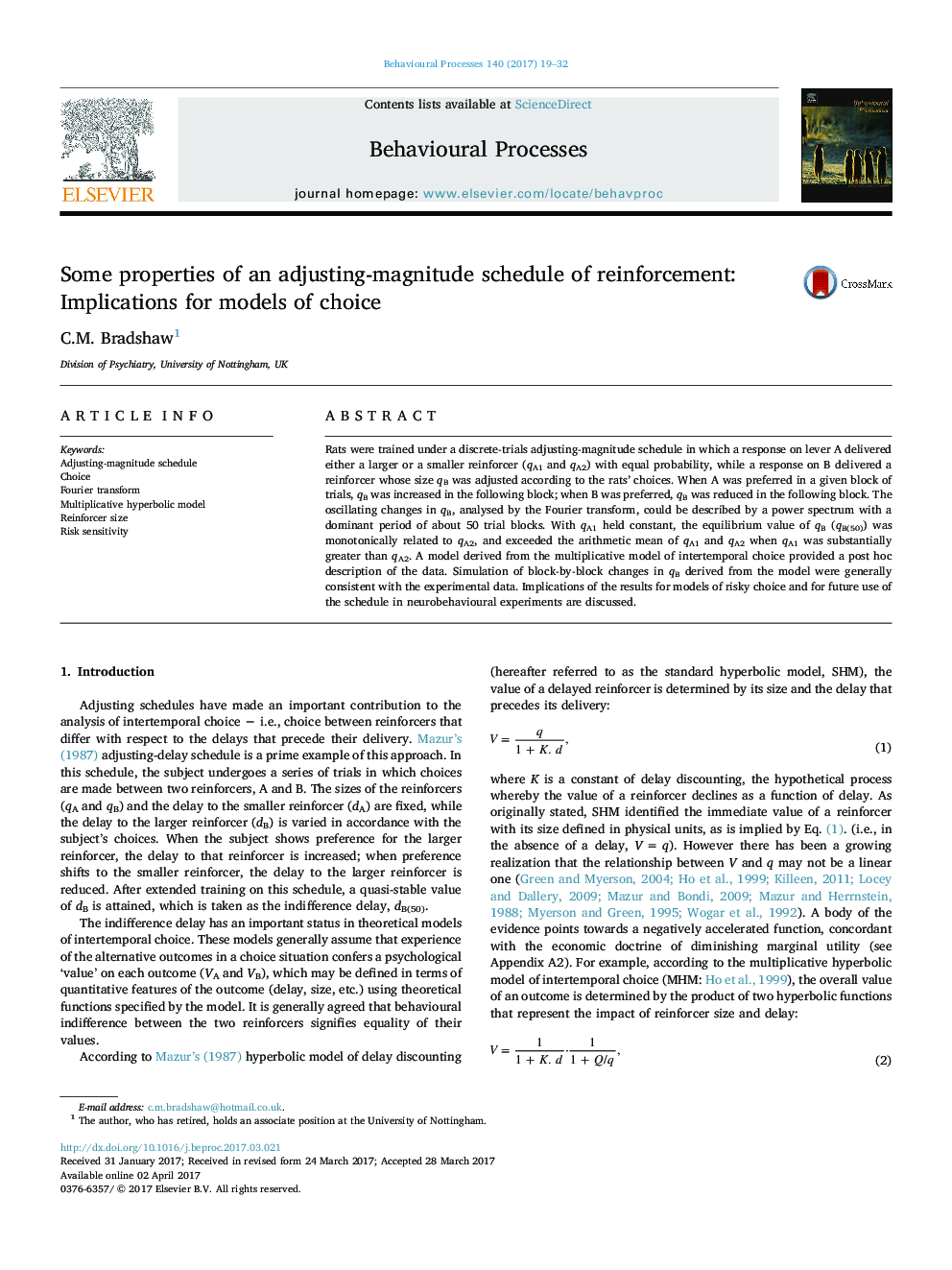| Article ID | Journal | Published Year | Pages | File Type |
|---|---|---|---|---|
| 5539767 | Behavioural Processes | 2017 | 14 Pages |
Abstract
Rats were trained under a discrete-trials adjusting-magnitude schedule in which a response on lever A delivered either a larger or a smaller reinforcer (qA1 and qA2) with equal probability, while a response on B delivered a reinforcer whose size qB was adjusted according to the rats' choices. When A was preferred in a given block of trials, qB was increased in the following block; when B was preferred, qB was reduced in the following block. The oscillating changes in qB, analysed by the Fourier transform, could be described by a power spectrum with a dominant period of about 50 trial blocks. With qA1 held constant, the equilibrium value of qB (qB(50)) was monotonically related to qA2, and exceeded the arithmetic mean of qA1 and qA2 when qA1 was substantially greater than qA2. A model derived from the multiplicative model of intertemporal choice provided a post hoc description of the data. Simulation of block-by-block changes in qB derived from the model were generally consistent with the experimental data. Implications of the results for models of risky choice and for future use of the schedule in neurobehavioural experiments are discussed.
Related Topics
Life Sciences
Agricultural and Biological Sciences
Animal Science and Zoology
Authors
C.M. Bradshaw,
